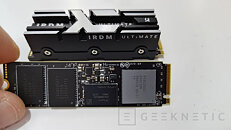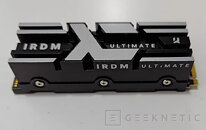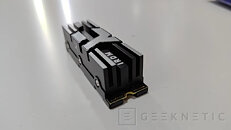- Joined
- Oct 9, 2007
- Messages
- 47,886 (7.38/day)
- Location
- Dublin, Ireland
| System Name | RBMK-1000 |
|---|---|
| Processor | AMD Ryzen 7 5700G |
| Motherboard | Gigabyte B550 AORUS Elite V2 |
| Cooling | DeepCool Gammax L240 V2 |
| Memory | 2x 16GB DDR4-3200 |
| Video Card(s) | Galax RTX 4070 Ti EX |
| Storage | Samsung 990 1TB |
| Display(s) | BenQ 1440p 60 Hz 27-inch |
| Case | Corsair Carbide 100R |
| Audio Device(s) | ASUS SupremeFX S1220A |
| Power Supply | Cooler Master MWE Gold 650W |
| Mouse | ASUS ROG Strix Impact |
| Keyboard | Gamdias Hermes E2 |
| Software | Windows 11 Pro |
Here are some of the first pictures of the GoodRAM IRDM Ultimate PCIe Gen 5 M.2 NVMe SSD. Built in the M.2-2580 form-factor, the drive combines Phison's upcoming E26 controller, with what's likely KIOXIA 162-layer 3D TLC NAND flash memory. The controller takes advantage of the PCI-Express 5.0 x4 interface, and NVMe 2.0 protocol, offering sequential transfer speeds of around 10 GB/s reads, with around 9.5 GB/s writes. The drive comes in capacities of 1 TB, 2 TB, and 4 TB. It comes with a fairly large heatsink included. AMD Socket AM5 will be the first platform to feature CPU-attached PCIe Gen 5 M.2 slots, which goes on sale by late-September. The first PCIe Gen 5 NVMe SSDs, according to AMD, should be here by November.



View at TechPowerUp Main Site | Source



View at TechPowerUp Main Site | Source




 Is there enough space for such a big heatsink?
Is there enough space for such a big heatsink?